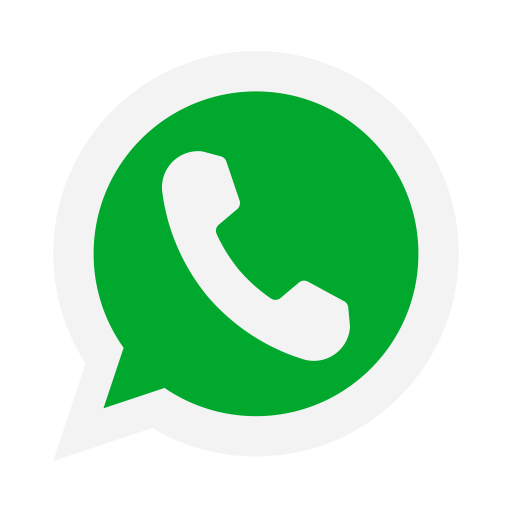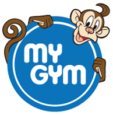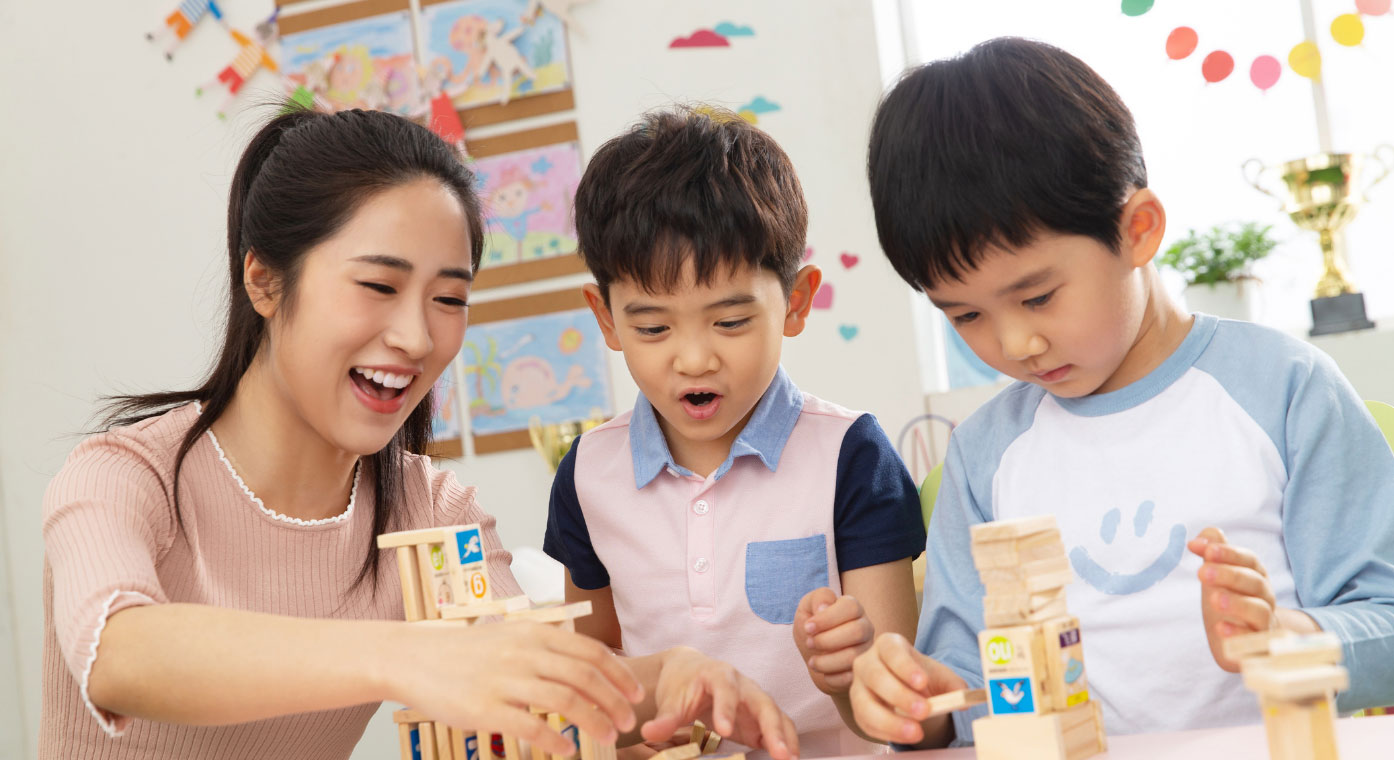Fun Preschool Learning Programs
From newborn to when they are five, children observe and take in everything they see, hear or touch. They also love when you chat, play and read to them, even though they may not understand a thing. Besides, your child’s brain grows the fastest during the first 5 years of her life. This is when participating in creative learning activities for preschoolers will give you big payoffs.
So make the time you spend with your child fun time by turning everything into a game that involves preschool enrichment programs. And as children learn through play, every little thing you do with them can help them get ready for the big day – the day they go to a kindergarten for the first time!
Design your own preschool program
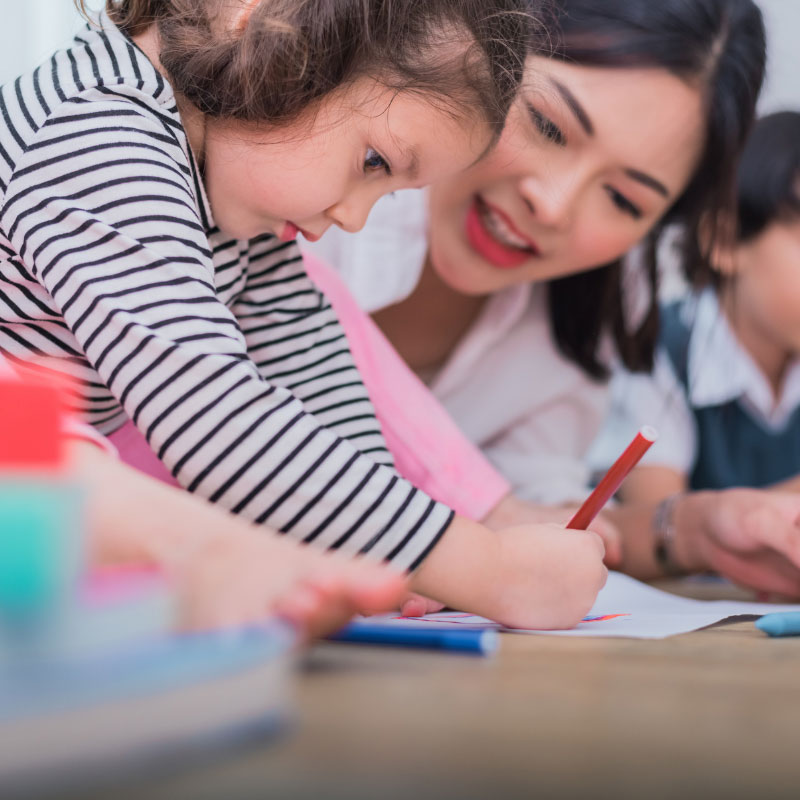
During the early years of a child, every day is a big opportunity to learn through play and grow a little. To make your little one thrive later, work out your own set of play-based learning activities for children that embrace the principles of developmentally-centered programs.
Here are a few age-wise tips to help you start on devising your own preschool enrichment programs and playtime ideas. Your child will find it safe to explore, and since you are always around to support, your child is sure to find the encouragement she needs from time to time.
0 to 6 months
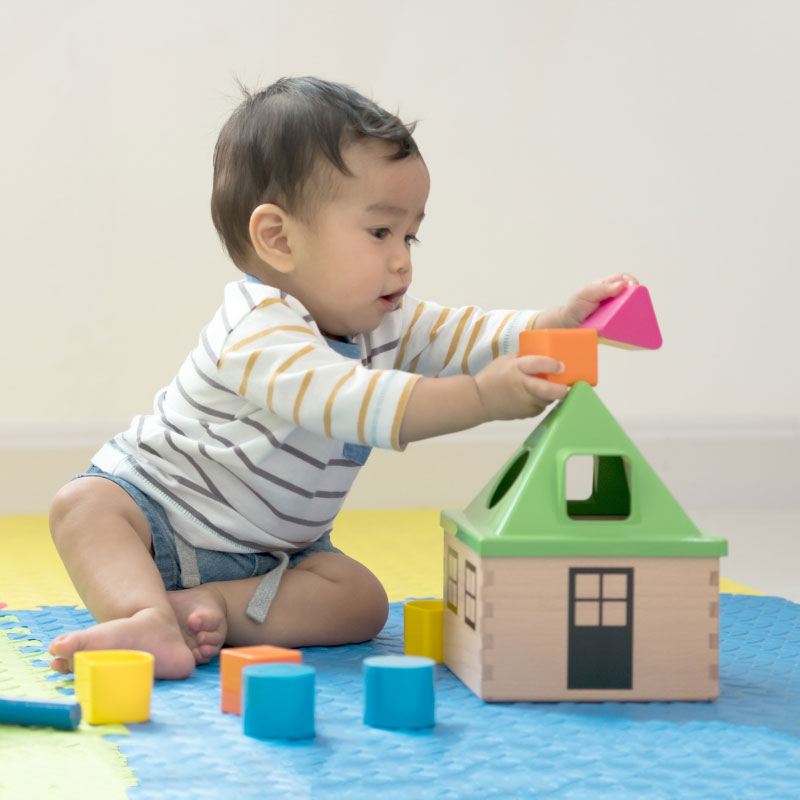
Make every day a fun day
When it is bath time, allow your baby to play with water. The more she plays, the more enjoyable a bath becomes. While she is playing, talk a little about water. The sound it makes, the waves it creates. Always use the same words, and use the same actions again and again. Pat the water with your hand to make a splash, and say “splash…splash…”
Or when you are changing the nappy, guess what your baby might be thinking and feeling. Turn it into words For instance, you can verbalise by saying, “you look happy” or “are you comfortable?”
Use sound, touch and feel
Whenever you get an opportunity, make faces and see if your baby responds by copying you. Make funny noises with your mouth or better still, touch the baby’s stomach with your lips and blow air to make a noise.
Facing your baby, sing any song, it could be the one your mother taught you when you were small. Make up a little song like “head…shoulder…knee…and toe,” rhyme it with the words and touch the body parts the words represent.
There is a lot more fun to have like when playing “tickles” with your baby. This is sure to make your baby giggle with delight. Gently tickle and smile and laugh with her. Use simple words like ‘tickle time…tickle toe…tickle me’.
Copying the noises your baby makes will be loads of fun as well. When she does, react to what she is doing – try saying, ‘You’re talking to me,’ or, ‘You really make funny noises.’ Sing lullabies that are simple, soothing, and will sound like real music to your baby’s ears and even to you.
6 to 12 months
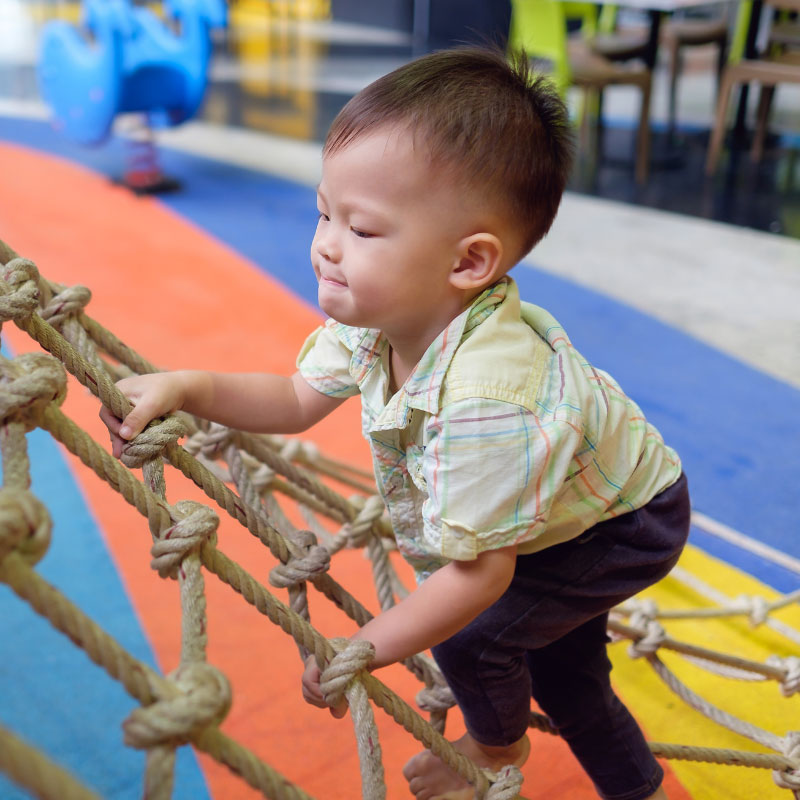
Make every day a fun day
Use actions to match what you’re saying – like when you are going out, wave to your child and say ‘Bye.’ Do this every time you leave your child and when visitors leave too.
When you are looking at a picture book with your child, notice what she is looking at and describe it. For example, ‘Oh, that’s a train,’ or ‘Look, a ball. Just like the one you have!’
Use sound, touch and feel
Peek-a-boo will be a big hit with your baby. Use your scarf to start the game. Put it over your baby’s face or hide your own face with it. Slide it off slowly saying, ‘Where are you? Oh, there you are!’
You could even act out the actions in a song. For instance, put your baby on your lap, hold both her hands, gently move back and forth, imitating a rowing action and sing “Row, Row, Row Your Boat…”
Get hold of a rattle or some other noise-making object like a spoon to bang on a saucepan. Pay attention to what your baby does then copy it, always describing what you are doing using action words like ‘rattle…rattle’ or ‘clang…clang’. Once your baby gets a hang of it, the decibel levels can get quite high!
As a relief from the noise, try out a much quieter activity, like hiding a ball, a tiny box, a baby sock in a bag. Ask your baby to find what is inside the bag. Every time your baby pulls out an item, talk about what it is. “Ah, it’s the ball …it’s a box …It’s a sock for your little foot!”
12 to 24 months
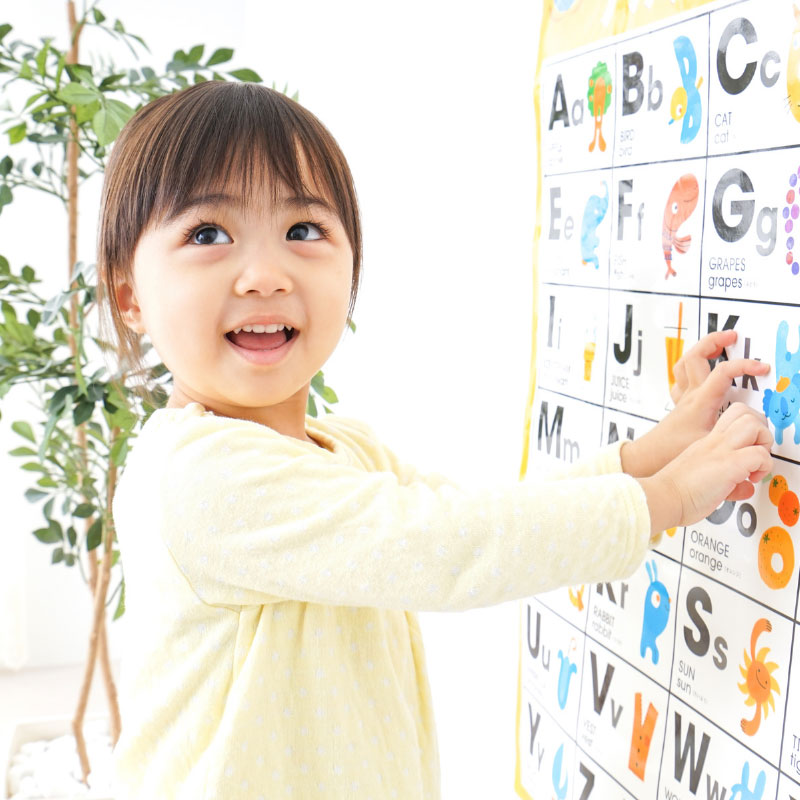
Make every day a fun day
Mealtimes are where you can give your child more choices but also get her to hear and understand more new words. For example, you could start with, “Would you like some grapes or want a banana?” Always showing the fruit and naming them at the same time. Pause, give her time to answer. There is no need to rush.
Say out aloud, the names of the foods your child is eating and talk about what they’re like. Use simple words like ‘sweet’, ‘round’, ‘smooth’, ‘cold’, ‘warm’. Add a dash of fun, pretend to be a rabbit as you nibble on a carrot, or on some cheese. Make sure that both you and your child have the same food to try!
Before bedtime, snuggle up together and look at a picture book. Wait for your child to point out some things for you. Talk about what she is seeing, use words for actions as well as for things – for example, ‘Ah, the baby is sleeping.’
Get ready to be creative
When it is time to be creative, there is nothing to hold you back. Start drawing simple images and prompt your child to add to what you are drawing and even colour the picture. Speak softly and talk about the picture and colours. For instance, draw a house and point to the door and windows, the roof and the fence around the house. And trees in the backyard.
Spread some flour on a table and encourage your child to draw anything using her finger. No matter what she draws, praise her effort. The objective is to engage and involve and not point out mistakes!
How about a little story time using a puppet as the storyteller? Involve your child in creating one using an old sock. Cut two circles out of paper, put a black dot right in the middle and the eyes for the puppet are ready! Make up a travel story and let the puppet tell it in a funny voice. After the story ends, take turns to feed different foods to the hungry puppet. Sometimes, the puppet likes the food, and at other times, says “yuck!”
Time to play pretend
Every child has a favourite toy and never wants to let go of it. Include the toy during all her daily routines, you can also make it a part of developing your child’s pretend play skills. Have her favourite dolly sit next to her at mealtimes, allowing your child to pretend to feed some toy food. Or, put the dolly to bed at the same time your little one goes to bed.
You could even combine water-play with pretend-play by giving dolly a bath. You can teach your child about body parts by asking her to ‘Wash dolly’s legs, wash dolly’s tummy’. When she’s all clean, dry dolly off with a towel, get her dressed again, and comb dolly’s hair. All the time talking about your actions while doing them.
Pretend play is extendable to suit any situation. Like pretend you want to go to sleep. Before closing your eyes, instruct your child to wake you up after a while. Lie down, then begin to snore loudly. When your child wants to ‘wake’ you up, don’t open your eyes for a while. The longer you take to wake up, the more your child will be excited.
2 to 3 year olds
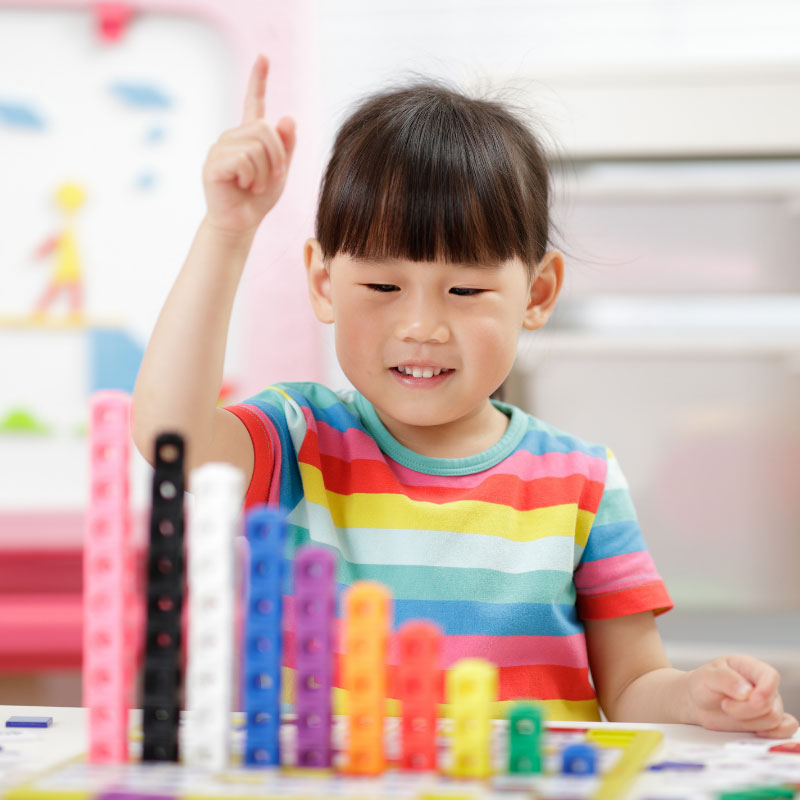
Make every day a fun day
If you are planning on including your child in helping you do your daily chores, this age is just about right to make a beginning. This will help your child understand what daily tasks are like. Involve her in making her own bed by saying, “the bed is a little messy, let’s change the sheets.” Start with simple tasks like arranging the pillows and yes, don’t forget to praise and thank her for helping out.
It will be a good idea to take pictures or videos while your child is engrossed in doing her chores. Remember to talk about these pictures. For instance, you could say “
this is you washing the plates,” or “here is another one wearing your frock back to front.”
These can become conversation starters as well as a record of your child’s activities to share when dad comes home from work. Or when waiting in a queue at the grocery store. Or when you want to create an album as a keepsake.
Use sound, touch and feel
Singing songs improves bonding, overcomes shyness and encourages your child to use her imagination. The good old “Old MacDonald had a farm” song will be an enjoyable starter. Ask your child to change the animals in the song, describe how they look, the sounds they make, the way they move…everything is allowed. Try it!
When you are through with singing, put on some music and dance together. Try playing “musical statues!” Suddenly stop the music and freeze. See who stops first, describe the silly positions you are frozen in!
Get ready to be creative
Put together an album of memorable events. They could be anything, a ride on the metro, a walk in the park or a celebration. Every time you open the family event book, it will stir up happy memories you can talk about. Re-create the fun moments both of you had.
Change the scene by going out for a walk in the park. Collect natural objects like fallen leaves or flowers, pick up small pebbles or rocks to take home. Talk about the things you found together, look at the colours, feel the texture, is it smooth or rough? Round or sharp around the edges. If you found a funny looking rock, ask your child to paint it in the colours she likes. Draw the eyes and nose on it. Even give it a name.
There is nothing like playdough to get the creative juices flowing. You can involve your child in the process of making your own playdough at home. Share how you are going to make it. Talk about it using words like, “knead…squish…roll…pat…” while you do the actions. Show your child how to play, she will surprise you with the shapes she can come up with.
Time to play pretend
Use two chairs, set them apart back to back and drape a blanket over them. This becomes your tent or a den. Pretend you are out camping…get inside together and act out cooking some food, eating it, read a book, and go off to sleep.
Or you can build a pretend car out of a cardboard box with wheels stuck on it. Allow your child to take you for a drive to grandma’s house. As your child pretends to drive the car, talk about what she is doing and check if she is following traffic rules. Say things like ‘slow down, you’re going too fast.” Or “Can you stop at the flower shop, grandma loves roses.”
About My Gym
To learn more about preschool enrichment programs and ideas, visit My Gym. Choose a day when you will be relatively free and come over with your child in tow. Your child could be an infant (as young as 6 months), toddler or a preschooler, age is not a bar.
My Gym knows that each child is unique and has a set of needs and abilities. With this in mind, we help your child develop critical thinking, creativity and interpersonal skills. Discover how even the youngest member of the My Gym community embraces the specially designed preschool learning programs.
We work in partnership with you and strive to provide the best learning experiences. Laying a firm foundation for your child’s personal, academic and future growth by involving your child in age appropriate creative learning activities for preschoolers.
Please note: Our classrooms are thoroughly sanitized every day — the tables, the chairs, the children’s activity stations and everything else the child might touch is made safe and clean.
Frequently Asked Questions
How do we make learning fun for preschoolers?
Kids are hihgly observant and curious about everything around them. Preschool learning programs focus on introducing toddlers to their age-appropriate skill sets through exciting educational play activities. Enrolling children in fun-filled preschool learning programs ignites their innate creativity and quenches their thirst to discover and explore new lessons while performing daily activities in unique and interesting ways.
What are some fun educational activities?
A child’s imagination grows by leaps and bounds when engaged in story-telling activities. Splashing water during bath-time activates their primary senses. Meal sessions turn merrier for toddlers when they are engaged in alphabet activities that sharpen their fine-motor skills during stages of early childhood development. While playing around in the garden, making kids collect natural objects like fallen leaves or flowers and sorting them can be another easy yet effective activity that helps them develop gross-motor skills.
What do children learn in a high-quality preschool program?
Preschool enrichment programs equip toddlers with essential skills and prepare them for a well-structured preschool program. A strong foundation laid during early childhood development instills critical thinking skills, creative self-expression skills, increased confidence and a sense of independence in kids throughout their academic journey. Age-appropriate educational play activities are based on physical, cognitive, creative and social skills that inspire kids to harness their true inner potential in interesting and exciting ways.
When can children go to preschool?
Early literacy development refers to toddlers being introduced to various sounds, words and languages. Greeting kids as they wake up from sleep, sounds of water splashes during bath-time, reciting rhymes, singing songs and playing alphabet games are some of the easiest ways that parents can contribute to support their child’s learning during early childhood development. Developing literacy skills from early childhood through daily activities builds a strong foundation for the child’s overall growth and smooth academic journey.
What is literacy in early childhood?
Early literacy development refers to toddlers being introduced to various sounds, words and languages. Greeting kids as they wake up from sleep, sounds of water splashes during bath-time, reciting rhymes, singing songs and playing alphabet games are some of the easiest ways that parents can contribute to support their child’s learning during early childhood development. Developing literacy skills from early childhood through daily activities builds a strong foundation for the child’s overall growth and smooth academic journey.
How do I make my child think creatively?
Parents are encouraged to involve their toddlers in daily fun activities such as cleaning up the bed, stacking their toys, asking them narrate tales about their grocery store visit or an evening spent at the park, help them identify shapes and colours of objects while cooking in the kitchen and reading a bed-time story to them before they sleep. Re-creating memories from photo albums is another creative task that helps kids relate to similar props or costumes.
What are the benefits of music in child development?
Introducing toddlers to various sounds and music enhances self-expression skills, sharpens fine-motor skills and proves to be a soothing and engaging activity. Singing rhymes and songs improves brainpower and boosts concentration levels. Besides empowering intellectual, social, emotional, motor and linguistic skills during early child development, music also plays an important role in relaxing muscles of the brain which makes it easier for kids to retain knowledge about new insights and tough lessons.
How do you develop a child’s imagination and thinking skills?
Preschool learning programs consist of fun-filled and enriching activities that are based on the four primary interdependent domains of early child education including physical skills, cognitive skills, social and emotional skills. Engaging kids in interesting playtime ideas such as puppetry, music, reading, drawing or painting and story-telling activities helps heighten a child’s imagination and confidence as well as fosters critical thinking skills.
